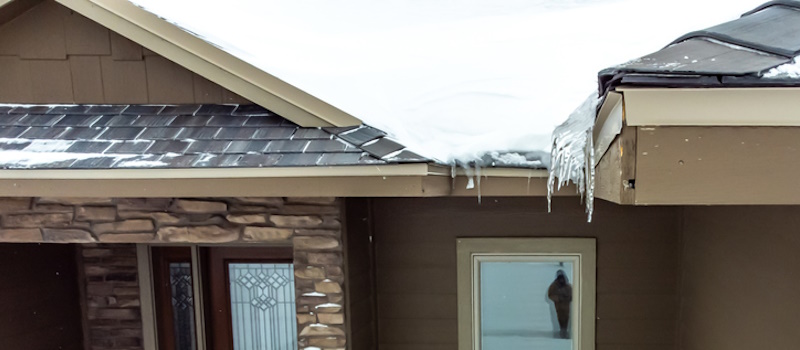A Guide to Fixing Ice Dams on Your Home
A Guide to Fixing Ice Dams on Your Home

A Guide to Fixing Ice Dams on Your Home
The snow and ice during the winter season can make for some picturesque scenery, but it can also create many problems. One such problem many homeowners have to contend with during the winter months is ice dams, and they can cause significant damage if left unaddressed.
To help you keep your home in good condition during the cold and snowy months of winter, let's take a look at everything you need to know about ice dams and how to fix them.
What are Ice Dams?
According to the National Weather Service, ice dams occur when snow on top of a home's roof melts during the day and refreezes at night when temperatures drop. Over time, this cycle of melting and refreezing can cause melted water and ice to work its way under your home's shingles, eventually damaging the roof, walls, and ceiling beneath.
If left unaddressed, ice dams can potentially cause a lot of costly damage. Considering that the average cost to replace a damaged roof is around $10,000, it's easy to see how ice dams can become an expensive problem. Thankfully, fixing ice dams before they can cause permanent damage can be a relatively quick and effortless process.
Steps to Fixing Ice Dams
If you have heavy snow buildup on the roof of your home, there is the potential for ice dams to form. To prevent this from happening (and to fix any ice dams that have already formed), here are the steps you can take:
1. Gather the Right Equipment
Climbing onto an ice-covered roof can be dangerous, so it's vital to use a sturdy ladder and a safety harness. To fix ice dams, you'll also need a rake or long-handled broom, a mallet or hammer, and warm water.
2. Remove Excess Snow
Use your rake or broom to brush away excess snow from the roof. This will help reduce the material available for ice dam formation.
3. Break the Ice Dam
Gently break up the ice dam by using a blunt mallet or hammer. Be cautious not to damage the roof, gutters, or downspouts during this process.
4. Create Channels for Water Flow
Once the ice dam is partially removed, you can create channels through the remaining ice to allow melted water to escape. This can be done by pouring warm (not boiling) water along the ice to create a pathway. You should also make sure that your gutters and downspouts have no debris so that water can flow freely.
5. Improve Attic Insulation and Ventilation
You can address the root cause of ice dams by improving your attic's insulation and ventilation. This helps maintain a consistent roof temperature, preventing the melting-and-freezing cycle that leads to ice dams.
6. Seek Professional Assistance
If ice dams persist, or you're uncomfortable fixing them yourself, consider seeking professional help from a roofing contractor or insulation specialist.
